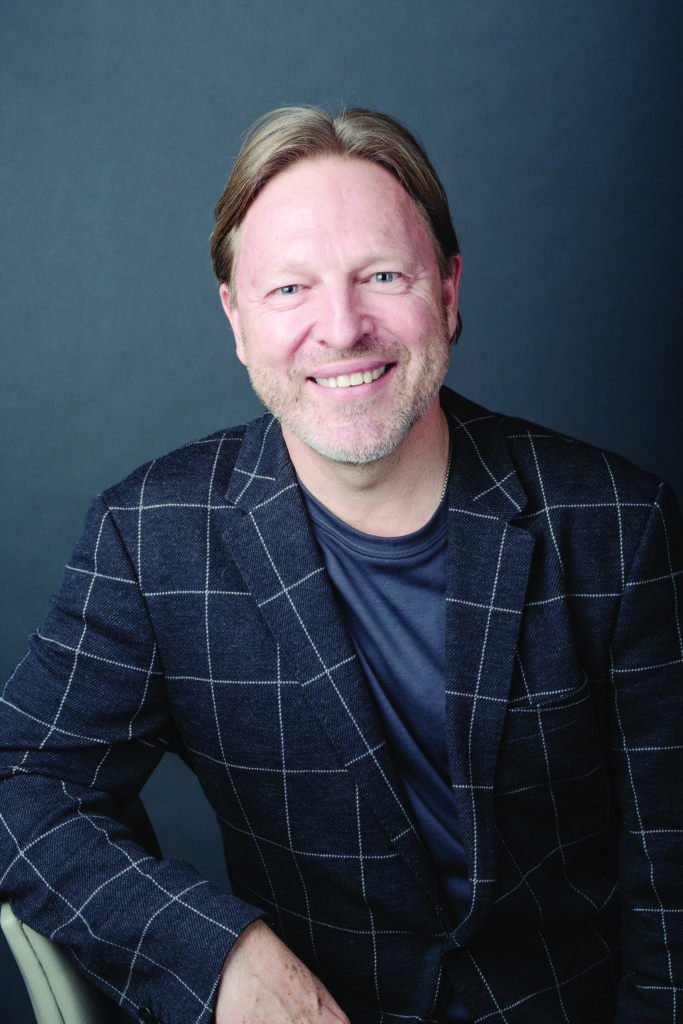Bestselling author Verne Harnish will be the keynote speaker at our 2019 CEO Leadership Conference, Nov. 7-8 in Dallas. More information.

In the late 1990s, Verne Harnish picked up a copy of Titan, Ron Chernow’s powerhouse biography of John D. Rockefeller. For some, it was interesting history. For Harnish, it was a page-turning how-to, a guide to the practices and processes of one of history’s greatest business minds.
The book confirmed many of the things Harnish observed in great companies as a longtime entrepreneur and founder of the world-renowned Entrepreneurs’ Organization, especially the need for priorities, solid data and a set rhythm for operations. Four years later, he released Mastering the Rockefeller Habits, a slim, detailed guide to putting these principles to work. It became an international bestseller.
In 2014, he followed with Scaling Up, an update he dubbed “Rockefeller 2.0.” It expanded on his original work, detailing a virtuous cycle for growing a business by attracting the right people, creating a differentiated strategy, executing that strategy—and making sure you had enough cash on hand to weather the inevitable bad times. It’s since become one of the most influential bestsellers of the past decade.
Nurturing high-growth “Gazelle” firms is Harnish’s passion—and business—but given his interest in Rockefeller, I couldn’t resist asking him what the most powerful CEO of the Gilded Age would make of the C-Suite today—what’s changed and what hasn’t. What follows is a transcript of our conversation, edited for length and clarity.
What’s more impressive is what hasn’t changed. He understood the need for getting data in from the field on a daily basis. He had one of the bleeding-edge telegraph systems right in his home. Today, you have some slightly different technologies, but I dare say that a lot of leaders still don’t really have good daily visibility into how well their company is running, particularly mid-market firms. That amazes me.
Number two, one of the most important of what I call “leader KPIs” is getting a lot of quiet time for thinking. He worked from home every morning and didn’t go into the office until lunch.
Today, with all this influx of connectivity and technology, I don’t think we’re getting necessarily more important information, but everything seems to have been raised to the urgent. It’s giving us less time to really think, and ponder, and read, which is critical to the creative and innovation process, which is what you’ve got to accelerate if you want to keep up.
I was enamored by the fact that he was into this kind of daily walk and talk in the morning and the evening. He had lunch every day with his nine directors and—when you speed forward 100 years—the late Steve Jobs’s key to leading was with famous walks and talks with people. Bill Campbell, who was Steve’s coach, would do their walk and talk on Sunday. Steve had lunch almost every day with [Apple design chief] Jonathan Ive. He understood that it’s important to choose who you break bread with on a daily basis.
Our mid-market leaders, they’re faced with too much innovation. They’re faced with too many good ideas. I think part of what happens is we keep trying to apply MBA management techniques to these growth firms, and that’s been the bigger failure.
There are just a lot more shiny objects. That’s number one, which is distracting. Number two, Rick Kash, former vice chairman of Nielsen, noted in his book, How Companies Win, that in 2007, we crossed a significant line. In [the past], there was more demand than supply. I don’t want take anything away from some of these family-run dynasties all through the last half century, but truly, if you just showed up, you had the business. It was all a drive around the planet on the supply-chain side, to do better, faster, cheaper.
Now, through the Internet, you can do business with anyone at anytime from anywhere. The fundamental shift that has to be made is get your head out of the cost and supply side of the business, and get it refocused on the demand and price side of the business. So we’ve really been pushing our CEOs to push the supply chain side of the business down closer to the front line, and get much more focused on understanding the customer side of the business, like they’ve understood the supply side of the business for the last five decades.
First of all, we’re spending literally every day talking and interacting with customers. Everyone loves to talk about how Steve Jobs disliked focus groups. But he would spend most of his afternoons grabbing hold of a customer issue and tracking it through Apple, almost to the chagrin of everyone else in Apple. It could almost feel like micromanagement. But that’s what we did with Sanjeev Mohanty in India.

Chief Executive Group exists to improve the performance of U.S. CEOs, senior executives and public-company directors, helping you grow your companies, build your communities and strengthen society. Learn more at chiefexecutivegroup.com.
0

1:00 - 5:00 pm
Over 70% of Executives Surveyed Agree: Many Strategic Planning Efforts Lack Systematic Approach Tips for Enhancing Your Strategic Planning Process
Executives expressed frustration with their current strategic planning process. Issues include:
Steve Rutan and Denise Harrison have put together an afternoon workshop that will provide the tools you need to address these concerns. They have worked with hundreds of executives to develop a systematic approach that will enable your team to make better decisions during strategic planning. Steve and Denise will walk you through exercises for prioritizing your lists and steps that will reset and reinvigorate your process. This will be a hands-on workshop that will enable you to think about your business as you use the tools that are being presented. If you are ready for a Strategic Planning tune-up, select this workshop in your registration form. The additional fee of $695 will be added to your total.

2:00 - 5:00 pm
Female leaders face the same issues all leaders do, but they often face additional challenges too. In this peer session, we will facilitate a discussion of best practices and how to overcome common barriers to help women leaders be more effective within and outside their organizations.
Limited space available.

10:30 - 5:00 pm
General’s Retreat at Hermitage Golf Course
Sponsored by UBS
General’s Retreat, built in 1986 with architect Gary Roger Baird, has been voted the “Best Golf Course in Nashville” and is a “must play” when visiting the Nashville, Tennessee area. With the beautiful setting along the Cumberland River, golfers of all capabilities will thoroughly enjoy the golf, scenery and hospitality.
The golf outing fee includes transportation to and from the hotel, greens/cart fees, use of practice facilities, and boxed lunch. The bus will leave the hotel at 10:30 am for a noon shotgun start and return to the hotel after the cocktail reception following the completion of the round.